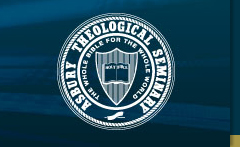Files
Download Full Text (63 KB)
Summary
We will survey American Methodism from its beginnings to the present. The course materials focus on the theological, cultural, and institutional themes that shaped Methodism in America. The course especially highlights the spiritual, theological, and social aspects of Methodism's grand legacy. The evangelistic thrust, social concern, institutional development, and theological shifts noted in America between 1766 and the present will be seen against the backdrop not only of American political and cultural factors, but of the Methodist origins in England. If you have been a United Methodist very long, you already know some things about American Methodist history. For example, almost all United Methodists understand that Bishop Francis Asbury was an important person, even if they do not know exactly why he was so important. Also, you are probably already aware that nineteenth-century Methodism dominated the American religious landscape, in a time when Methodism was the most significant religious force in the nation's growth and development. Many know that Methodism founded a host of colleges, seminaries, and universities, some of which now rank among America's best schools (I attended two of them myself, Duke as an undergraduate and Garrett-Evangelical for seminary). The majority of United Methodists have some appreciation of the prominent place of the early circuit riders, camp meetings, and class meetings. Most United Methodists understand that their liturgy echoes many of the strains inherited from Anglican liturgy. Most Methodists have some awareness that Methodism uniquely combined formal and informal styles of worship. In light of all this, Methodism, like several of the so-called old-line churches are ripe for a reexamination of their heritages. We live in a time when many United Methodists want to know more about the legacy that is theirs. Obviously, a declining American Methodism does not mirror American Methodism in its original form. As stated above, by the middle of the nineteenth century, the Methodist Episcopal Church had become the largest and most influential of America's denominations. Indeed, at one time, Methodism's membership roles exceeded the combined membership roles of the rest of the nation's Protestant denominations. By the beginning of the twentieth century, however, American Methodism began to change directions. If you want to understand the original genius of American Methodism in order better to assess the present and more adequately to prepare for the future, this class will be a rewarding adventure. Since United Methodists cannot move into a challenging future without knowing their treasured past, the purpose of this course is to do just that.
Publication Date
January 2008
Publisher
Asbury Theological Seminary
Keywords
CH, 600, CH, 601, HISTORY, OF, METHODISM, FA08
Language
English

